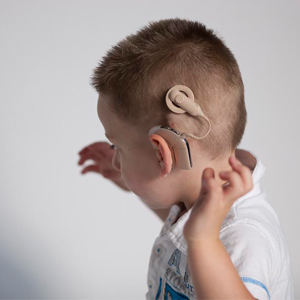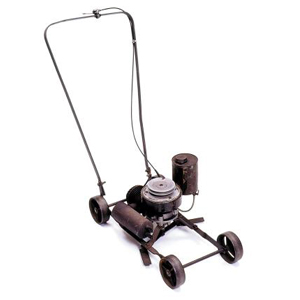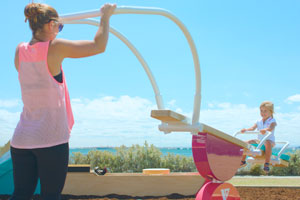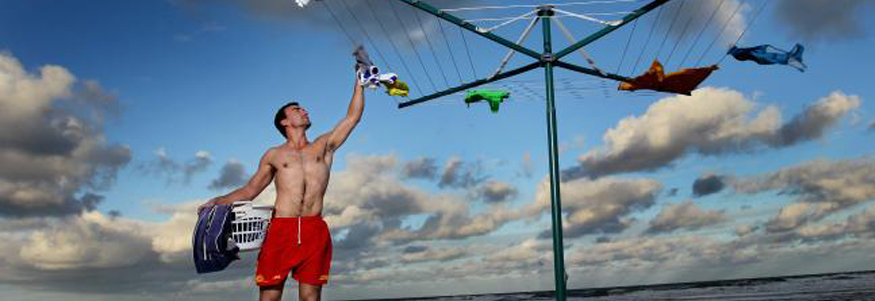Innovative Australia - Our History of InnovationProduct Design MelbourneInnovation distinguishes between a leader and a followerAustralia has always been an innovative country, because we have had to be. Physically we are the 6th largest country in the world, yet we only rank 56th in overall population. Our location and access to the rest of the world has given us need to innovate. Both to survive without resources available to other nations and to compete on a world stage. Innovation has helped us to survive and prosper. At Bayly we see innovation as finding a unique way to fulfil a client’s need, and we love to be involved in it. Here are some of our favourite Australian innovations that could inspire you. Innovation for SurvivalAustralia is a vast country, with an incredible variety of terrains. In the late 19th century, one of these terrains was causing particular distress to early farmers. In parts of South Australia the cost of clearing the land of trees and rocks for farming was particularly large. It was large enough that the South Australian Government in 1878 offered a £200 reward to anyone who could develop an effective mechanical stump puller to help with land clearing. Instead of finding ways to pull stumps and rocks, in 1876 Richard and Clarence Smith found an entirely innovative way to deal with the need to plough rocky, stump riddled fields. They developed the ‘Stump Jumper Plough’ that did not get stuck on rocks and stumps. It featured hinged blades that rose up when striking obstacles, before falling back into the soil. 4 decades later, a 16 year old from Gilgandra NSW would cause a similar revolution in agriculture. In 1912 Arthur Howard built his first prototype rotary hoe. The Hoe’s blades cut weeds and plant roots and mixed them with the top soil. This resulted in better seeding conditions than traditional ploughing. By 1929 the Howard Auto Company was exporting hoes around the world. By the 1970’s the company had produced over 400,000 hoes, sold to 120 countries around the world. Innovation for ConnectionMovies are certainly not an Australian invention, however, in their earliest form it was common for several short films to be shown back-to-back. ‘The Story of the Kelly Gang’, shot in and around Melbourne in 1906, was the first true feature length film. At approximately 1 hour in length it was the longest narrative film in the world at the time, long enough to be a feature on its own. The silent film was a commercial and critical success in Australia and abroad. Fast-forward to the 1960’s, and an ear surgeon by the name of Graeme Clark was working towards bringing greater connection to the profoundly deaf. With a passion ignited by his father’s deafness, Professor Clarke developed the Cochlear Implant. This device has since allowed for greater interaction by people with profound deafness around the world. Probably one of our best recognised inventions for connection is Wi-Fi. Dr John O’Sullivan lead a team who in 1996 patented technology which lead to Wi-Fi becoming viable. By 2012 the CSIRO had raised over $430,000,000 in royalties and settlements from the patented technology. Innovation for Residential LifeThe Victa Mower is another famous example of Australian innovation, however many probably do not know how it originated. Instead of being designed to the needs of hundreds or thousands of potential customers, it was designed to the needs of one, the inventor’s son. Gary Richardson had begun a lawn-mowing business, for which his father Mervyn made a couple of reel-type mowers. He built another 60 similar style mowers, using Villiers motors, under the Victa name. In 1952, after seeing a 2 person ‘Mowhall’ lawnmower, Mervyn was inspired to assemble a prototype rotary mower. This prototype led to the famous Victa Model 5, the forefather of the lawnmowers that most of us use today. By 1958 Victa Mowers was building 143,000 mowers a year with 3,000 employees. To date the company has produced over 8,000,000 lawnmowers. While we’re on the topic of meeting the needs of family, the Hills Hoist was reportedly developed by Lance Hill for his wife. She needed a way to dry clothes in their backyard without their lemon tree getting in the way. While Australian patents for rotary clothes drying racks date back as far as 1895, it was Lance Hill and the Hills Hoist which made the design and affordable, functional and durable Australian icon. Innovation for ConvenienceThe humble note-pad, with its glued edge and easy to remove pages, is probably something that you had never even considered as having been invented. Surprisingly its origins can be traced to a Tasmanian stationary shop at the beginning of the 20th century. Aware of the inefficiency of folding 4 sheets of paper into a ‘quire’, J Birchall glued together a stack of halved sheets, and attached them to cardboard. Called the ‘Silver City Writing Tablet’, the notepad was born. For those who didn’t want to empty a wine bottle in a night (or perhaps for those who didn’t want to have to open 4 in a night), Australian inventors also had the answer. Back in 1935 Thomas Angrove of South Australia took a bag-in-box dispensing method for battery acid and patented it for wine. In 1967 Charles Maplas greatly improved the design, updating the bladder and welding on airtight tap. Wine casks still use this basic format today. Innovation at BaylyAt Bayly we are passionate about innovation and seeing Australian businesses succeed. Whether it is stay-sharp knives or floating fence-posts, a shower that can be turned on without getting wet or exercise equipment that is also a playground, we are always excited to be at the forefront of Product Design innovation.From plastic bank-notes to electronic pacemakers, innovation has driven Australian businesses on the domestic and international market for over a century. With businesses that innovate being 60% more likely to increase their profits, now is the time to get in contact with Bayly. See what innovative solution we can find for your customer’s problem.
|
|



Header image credit - News Limited
|
+61 3 9413 9000


